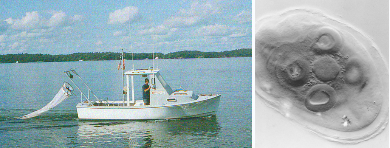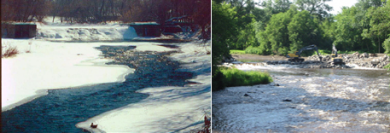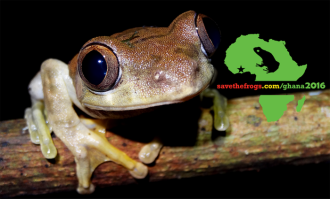
Early Life History of Fishes
Morphometric and meristic characters are useful in identifying wild-caught fish larvae, and to create a standard for growth studies. Comparisons can also be made of the effect of different diets on growth and development.
Field collections of fish eggs and larvae are used to determine spawning periods, growth, timing of emigration of juveniles, feeding habits, potential effects of parasites, and zooplankton predators.
Sampling of life stages with plankton nets, and a tapeworm (plerocercoid) parasite from a striped bass larva (picture shows the developing scolex).
Adult fish and benthos studies
Effects of altered river flow by dams to spawning and migration, sediment characteristics, loss or creation of habitat due to changes in water level, and surveys of streams and rivers to determine distribution and abundance.
The Fort Covington Dam in New York in winter (2003, left) and being removed in 2009, using an excavator and hydraulic hammer.
Assessing the changes to the aquatic community in the Salmon and Little Salmon rivers in northern New York. This work started in 2002 and ended in 2004 with the completion of the baseline survey ('Predicting the effects of dam removal...'). The baseline survey has been updated periodically. The study covers fish, macroinvertebrates, aquatic plants, sediment, water chemistry, and unionid mussels.
The second phase of the Fort Covington Dam removal study started in 2010 and was completed in 2012. The final report is listed on the publications page and will be updated as needed.
John E. Cooper, PhD
1444 County Route 23
Constantia, New York 13044-2752
Telephone 315-623-9694 (answering service)
updated 21 July 2024



